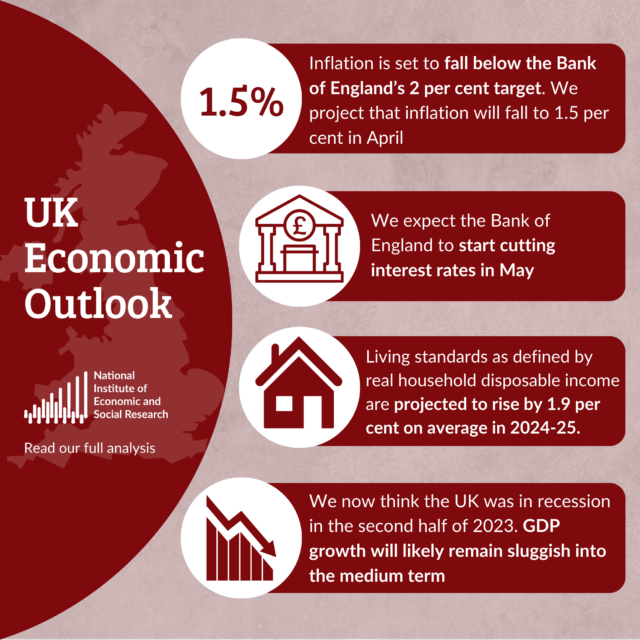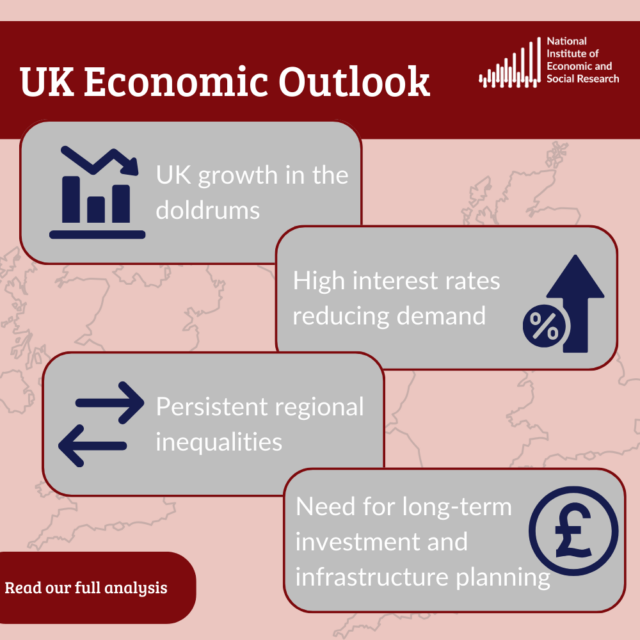- Home
- Publications
- Trade War – The Saga Continues
Trade War – The Saga Continues
 Pub. Date
Pub. Date
 Pub. Type
Pub. Type
Abstract:
The trade dispute between the US and China has not abated. On 24th of September, the US imposed a 10 per cent tariff on an additional $200bn imports from China (which, based on 2017 trade data, is around 40 per cent of total US imports of goods and services from China and about 8 per cent of total Chinese exports of goods and services). The Chinese authorities retaliated by imposing 5–10 per cent tariffs on $60bn of Chinese imports from the US. At the time of writing, the US was set to increase tariffs further from 10 to 25 per cent at the start of 2019.
We continue earlier work presented in recent copies of the National Institute Economic Review and NIGEM Observations – Liadze (2018), Hantzsche and Liadze (2018), Carreras and Ramina (2017) and Liadze and Hacche (2017) – on the impact of the imposition of tariffs by the US. Here we look at the effect on output in selected countries from the latest round of tariff impositions. As before, we run stylised simulations using the National Institute’s Global Econometric Model (NiGEM).2
This analysis reiterates previous findings that higher tariffs are a drag on economic activity not only in the countries at which tariffs are aimed, but also in countries that impose them, as well as having a spillover impact on those economies that do not participate in the trade dispute. These results, as usual, are based on particular assumptions, including those embedded in our macroeconomic model.
NiGEM Observations is a series of occasional notes published by the NiGEM team on topical macroeconomic modelling issues for NIESR corporate sponsors and NiGEM subscribers.
Related Blog Posts

Exploring the Data on UK Productivity Performance
Issam Samiri
Stephen Millard
11 Dec 2023
4 min read

UK Investment Past and Prospects: A Framework for Analysis
Catherine Mann
01 Dec 2023
6 min read


Where Are We With Regional Inequalities in the UK?
Adrian Pabst
Jagjit S. Chadha
01 Nov 2023
5 min read
Related Projects
Related News


Related Publications


Productivity and Investment: Time to Manage the Project of Renewal
12 Mar 2024
UK Productivity Commission

UK Households Should Start Feeling Better Off as Election Looms
07 Feb 2024
UK Economic Outlook

Low to Middle Income Households Facing Seven Years of Falling Living Standards
08 Nov 2023
UK Economic Outlook
Related events

Investing for Growth: boosting productivity through higher public and private investment

The Outlook for the Welsh Economy

Prais Lecture with Chris Pissarides: The Future of Work and Wellbeing

A View and Prospects for British Investment

How Can We Raise Investment?

Productivity Commission Evidence Session: Examining the Role of International Investment

High Dimensional Forecasting and its Pitfalls – M. Hashem Pesaran

Finance and Growth Workshop







